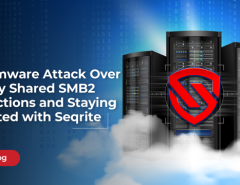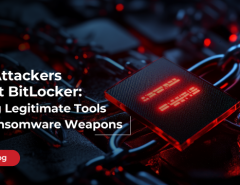Mobility is a widely-adopted approach that comes as a blessing for organizational growth but builds up as a headache for the IT security pros. While mobility can help enterprises reduce service costs and improve user experience by concentrating more on productivity and efficiency, excellent security measures should be implemented for safeguarding data privacy and personal information associated with these enterprise devices. The concept of BYOD or ‘Bring Your Own Device’ serves organizations right by engulfing social connections and employees into cohesive corporate networks. However, there isn’t a hard and fast rule when it comes to securing the entire mobile enterprise from potential threats. Put simply, the greater chunk of enterprise devices signifies gigantic proportions of confidential data and therefore protecting the same against fraudulent and malicious activities is the best possible solution.
Based on the Mobile Consumer Study, 2016, conducted by Deloitte, at least 74 percent of entrepreneurial respondents prefer checking their gadgets 15 minutes before bedtime. Similarly, almost 61 percent prefer doing the same within 5 minutes of waking up. This number shoots up to 88 percent within 30 minutes of getting up from sleep. These statistics and figures reveal a lot about the existing organizational scenario where electronic gadgets are literally inseparable. Moreover, with the nature of cyber-attacks evolving with time, it becomes necessary that the CISOs and CIOs concentrate on protecting enterprise devices from breaches. According to a prediction released by Gartner, almost 27 percent of organizational data traffic will soon bypass corporate perimeter security and flow into portable and mobile devices by 2021.
Security Risks that Deserve Attention
Most security threats to the enterprise devices are nothing but spin-offs of attacks aimed at the endpoint devices. Therefore, to move ahead with the protective measures, it is important to categorize and determine the existing security risks.
1. Data Loss via Physical Access
Enterprise devices, including mobiles and other portable gadgets, are easy to compromise or lose track of. As these gadgets are small, it becomes hard to track the whereabouts once the same is physically stolen. That way, even the cleverest of intrusion detecting mechanisms and software modules cannot help the concerned enterprise. Moreover, circumventing passwords, basic encryption and screen locks is pretty simple for a seasoned hacker. Once stolen and broken into, these devices can open a whole new world of possibilities for the hackers— allowing them easy entry into the VPN and email of the concerned organization. Hackers, after getting hold of valuable information, usually wipe out the essential datasets, just to gain a competitive advantage while initiating a ransomware attack. The best way of dealing with the same is to use ‘Forensic Data Retrieval’ software which allows the general public to recover information even upon manual deletion.
Read More: How one computer ended up corrupting an entire company
2. Data Breach via Device Attacks
There are cyber-attacks which directly target the devices, mainly for gaining undue access. These include buffer exploitations, browser-centric attacks and a host of other avenues including various messaging services. Device-targeted attacks are typically planned for obtaining data and control; thereby leading towards something like a DDoS threat. Distributed Denial of Service is one technique that hackers use for gaining myriad benefits from the organization and hacking into enterprise devices allows them to do so.
3. Data Theft via Malicious Codes
Enterprise devices are prone to malware threats with hackers tricking unsuspecting employees into accepting codes and other social engineering tricks. Spam links via messaging services and emails are the prolific examples of the same. Unlike PCs which can be invaded via drive-by downloads, mobile-specific hackers rely primarily on advertisements for gaining unsolicited entry into the devices. Better known as ‘malvertising’, these are adverts coded with Malware and Trojan for stealing confidential organizational data.
4. Data Leak via Communication Interception
The advent of Wi-Fi enabled gadgets has made devices prone to attacks. Hacking remotely into a wireless network is a cakewalk for experienced hackers. The likes of MTM or Man-in-the-Middle attacks are usually performed with ease where data transmission is closely monitored and decrypted, accordingly. Exploiting the weakness of wireless transmission and cellular protocols is a common phenomenon, and it is therefore advisable that secured enterprise gadgets should never be connected to public and free hotspots as it gives hackers a free entry right into the corporate database.
Bottom-Line
These are the reasons why companies must protect their enterprise devices at any given cost. While each one of the mentioned risks can be mitigated using innovative techniques and targeted safety measures, safeguarding the same from the insider threats is what can get excruciatingly tricky at times.
As an IT security partner for your business, Seqrite provides comprehensive endpoint security from advanced cyber threats. To know more, visit our website or




